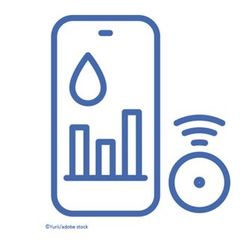© 2025 MJH Life Sciences™ , Patient Care Online – Primary Care News and Clinical Resources. All rights reserved.
Lilly's Novel Oral GLP-1 Orforglipron Shows Superior Efficacy in 2 Phase 3 Trials
Topline phase 3 data shows oral GLP-1 cuts HbA1c by 2.1% when added to basal insulin, nearly triple placebo's effect in patients poorly controlled on current therapy.
Eli Lilly announced positive topline results from 2 phase 3 trials showing that orforglipron, an investigational oral GLP-1 receptor agonist, achieved superior glycemic control in adults with type 2 diabetes (T2D). In the ACHIEVE-2 trial, the second head-to-head study in the phase 3 program, orforglipron lowered HbA1c by up to 1.7% compared to 0.8% with the SGLT2 inhibitor dapagliflozin, while in ACHIEVE-5, the drug lowered HbA1c by an additional 2.1% when taken with insulin glargine.
The Phase 3 ACHIEVE Program
Specifically, ACHIEVE-2 compared 3 doses of orforglipron (3 mg, 12 mg, 36 mg) against dapagliflozin 10 mg in 962 participants with T2D and HbA1c inadequately controlled on metformin. Study participants had an HbA1c between 7.0% or greater and less than 10.5% and a BMI of 23 kg/m2 or greater. Participants randomly assigned to orforglipron initiated treatment with 1 mg once daily and increased the dose every 4 weeks until reaching the randomized dose of 3 mg, 12 mg or 36 mg.
At 40 weeks, orforglipron demonstrated HbA1c reductions from a mean baseline of 8.1% of -1.3%, -1.7%, and -1.7% for the 3 doses respectively, compared to -0.8% with dapagliflozin under the efficacy estimand. Compared with dapagliflozin, all doses of orforglipron All doses achieved statistical significance versus the comparator, with P <.001.
In the ACHIEVE-5 trial, researchers evaluated orforglipron against placebo in 546 participants with T2D and inadequate glycemic control despite titrated insulin glargine, with or without concomitant treatment with metformin and/or SGLT-2 inhibitors. Participants met the same criteria for glycemic control and BMI as those in the ACHIEVE-2 trial.
From a mean baseline HbA1c of 8.5%, orforglipron reduced levels by by -1.5%, -2.1%, and -1.9% at the 3 dose levels compared to -0.8% with placebo under the efficacy estimand at 40 weeks, meeting the primary endpoint with P <.001 for all doses.
Potential to Become Standard of Care
"Orforglipron has now demonstrated superiority over 2 active comparators in clinical trials for type 2 diabetes," Jeff Emmick, MD, PhD, senior vice president of product development, Lilly Cardiometabolic Health, said in a statement, outperforming dapagliflozin, a commonly used SGLT-2 therapy, and in a second head-to-head trial, ACHIEVE-3, showing greater efficacy than oral semaglutide.
"The findings from ACHIEVE-5 add to this momentum, showing significant A1C reduction and weight loss when used in combination with titrated basal insulin. Together, these results reinforce orforglipron's potential to become a new standard of care for people living with type 2 diabetes."
Both trials met their primary endpoints and all key secondary endpoints under both efficacy and treatment-regimen estimands, according to Lilly, delivering HbA1c reduction, weight loss, and improvements in cardiovascular risk factors. The safety and tolerability profile remained consistent with previous studies, with the most common adverse events related to gastrointestinal effects that were generally mild to moderate in severity. The company stated that treatment discontinuation rates aligned with prior trials, and researchers observed no hepatic safety signal.1
Orforglipron is a once-daily small molecule oral GLP-1 receptor agonist that patients can take at any time without restrictions on food and water intake.2 The ACHIEVE phase 3 program has enrolled more than 6,000 people with T2D across five global registration trials, the company stated.1
Lilly plans to submit orforglipron for the treatment of T2D to global regulatory agencies in 2026, while submission for obesity treatment remains on track for the end of 2025. The company expects results from ACHIEVE-4, the final global registration trial in the program, in the first quarter of 2026. Researchers will present detailed trial results at a future medical meeting and publish them in a peer-reviewed journal.1
References
Lilly's oral GLP-1, orforglipron, demonstrated superior glycemic control in two successful Phase 3 trials, reconfirming its potential as a foundational treatment in type 2 diabetes. News release. Lilly. October 15, 2025. Accessed October 15, 2025. https://investor.lilly.com/news-releases/news-release-details/lillys-oral-glp-1-orforglipron-demonstrated-superior-glycemic
What to know about orforglipron: an investigational oral GLP-1. News release. Lilly. August 7, 2025. Accessed October 15, 2025. https://www.lilly.com/news/stories/what-to-know-about-orforglipron



